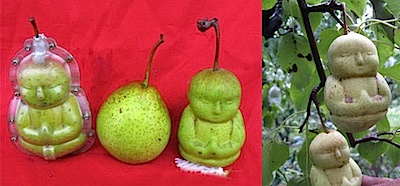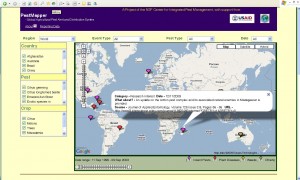A little something silly for the weekend.
This bizarre story made it to Boing Boing and the Daily Mail, but the earliest I can find for it, and indeed where I first saw it (Thanks, Matt), was a website in Portuguese. Now, through the miracle of Google Translate, we bring you, How to make pear shaped Buddha!
I think this is the “How to” Strange as I posted here, after all, who is going to try this at home? Well, then, for purposes of curiosity, if you ever heard of pear-shaped Buddha or even the famous square watermelons in Japan knows that the process is simple, just put a cast on fruit when they are starting to rise because the fruit tends to take the shape of the mold as it unfolds.
I’m afraid of what marketers can do with it …
I’m more afraid of what the Mail did to it, but no matter. More to the point, even the square watermelon is not as new as all that. From Popular Science, January 1938:
Farmer Grows Pumpkins with Human Faces
Pumpkins with human faces have been produced by John M. Czeski, Ohio farmer, after four years of experimenting. To grow the novel fruit, Czeski fashions an aluminum mold of the head he wants to reproduce, and places it around a growing pumpkin approximately the size of a small grapefruit. After the pumpkin has expanded enough to fill the inside contours, the mold is removed. The print of the features remains as the pumpkin continues to grow, and the final result is a lifelike full-size image in the ripened fruit.
Nothing new etc.


